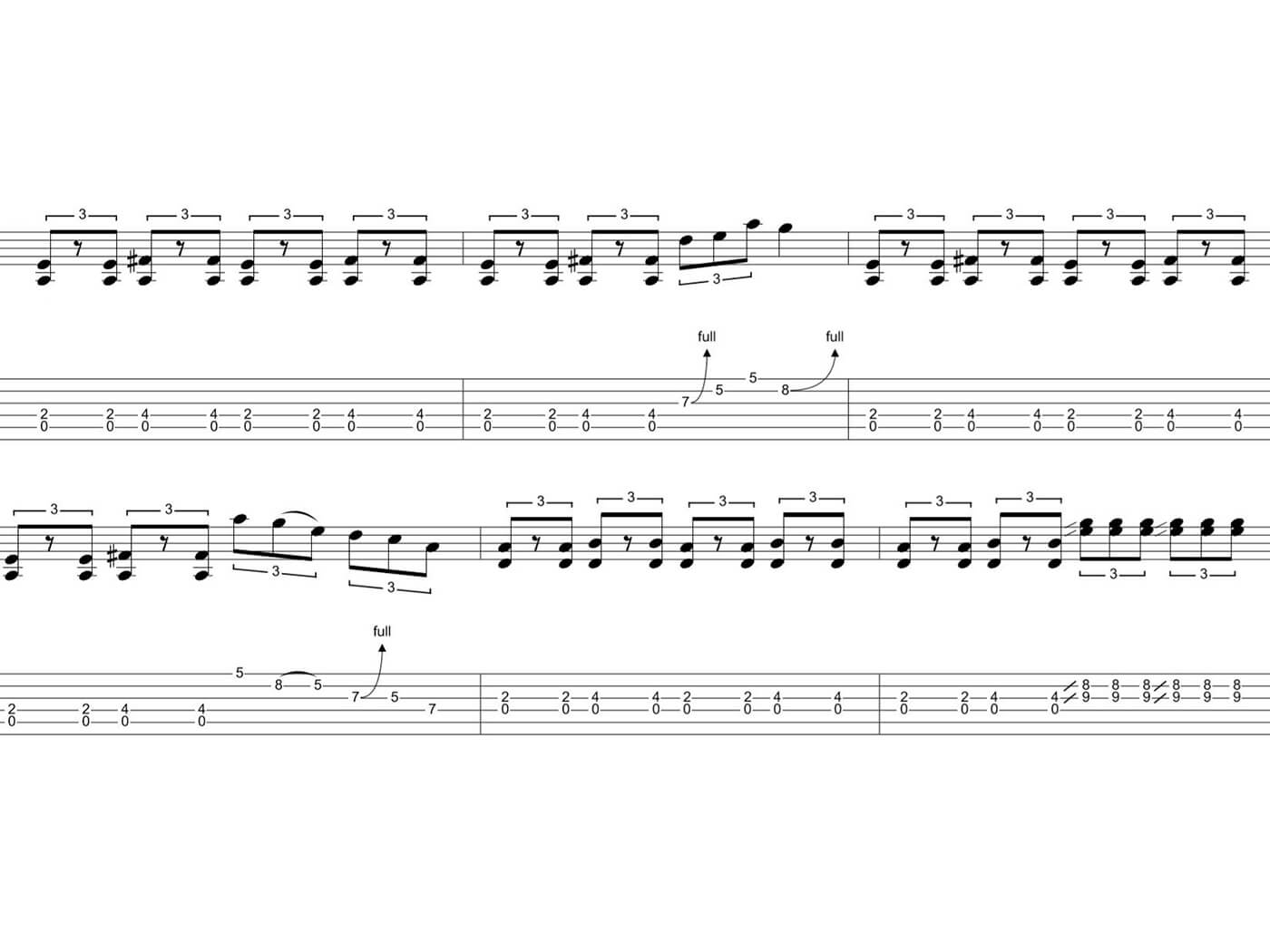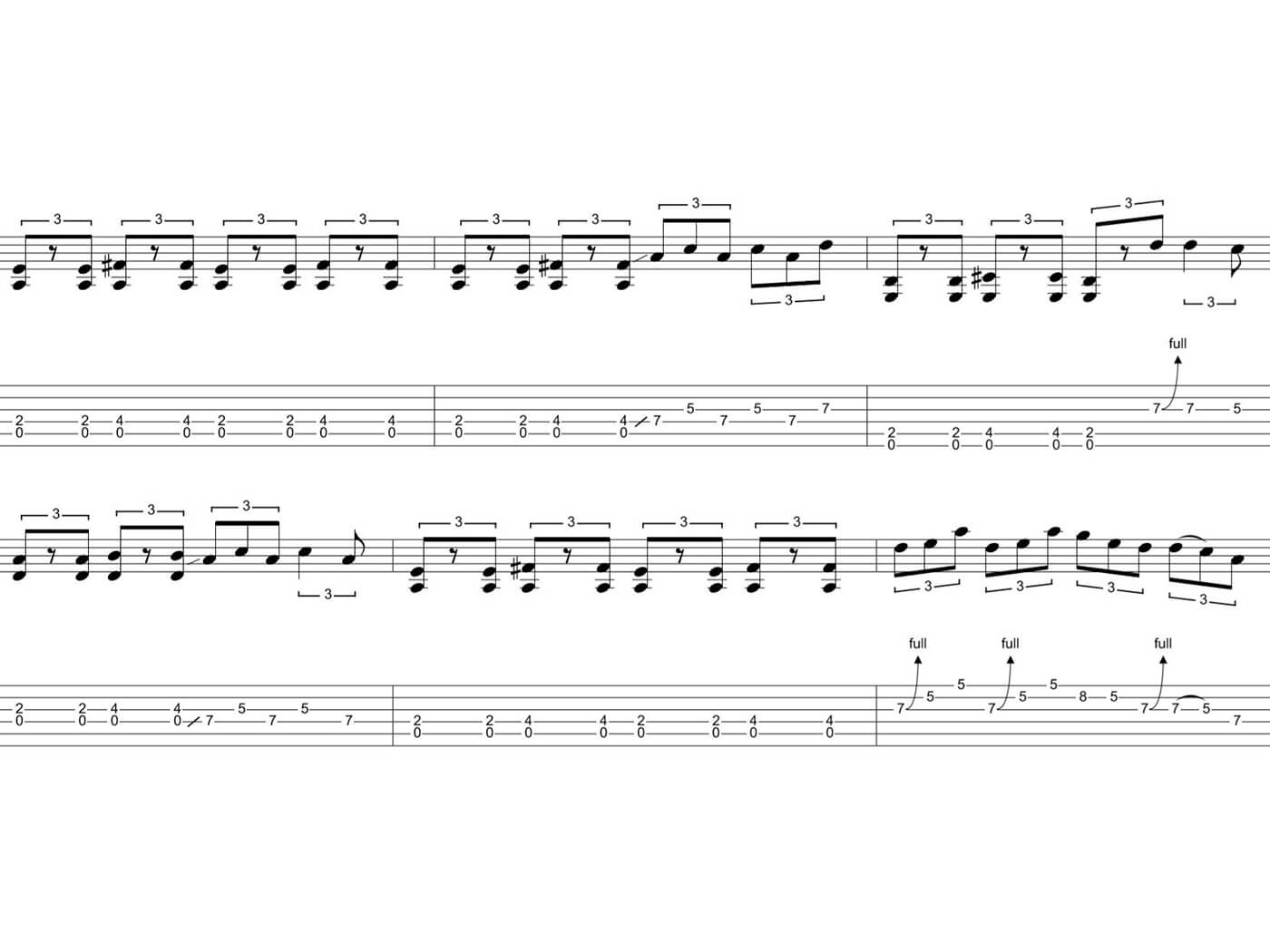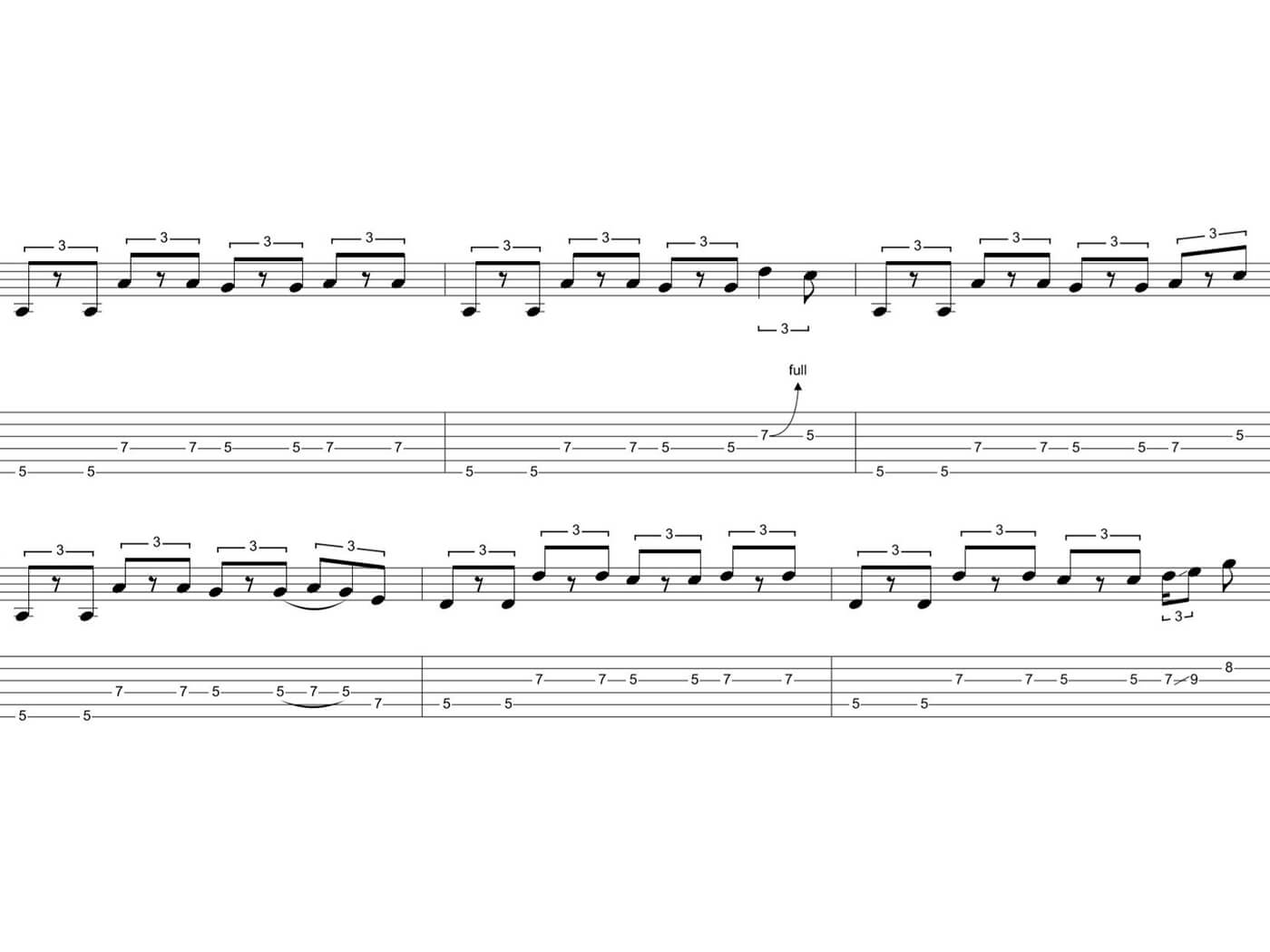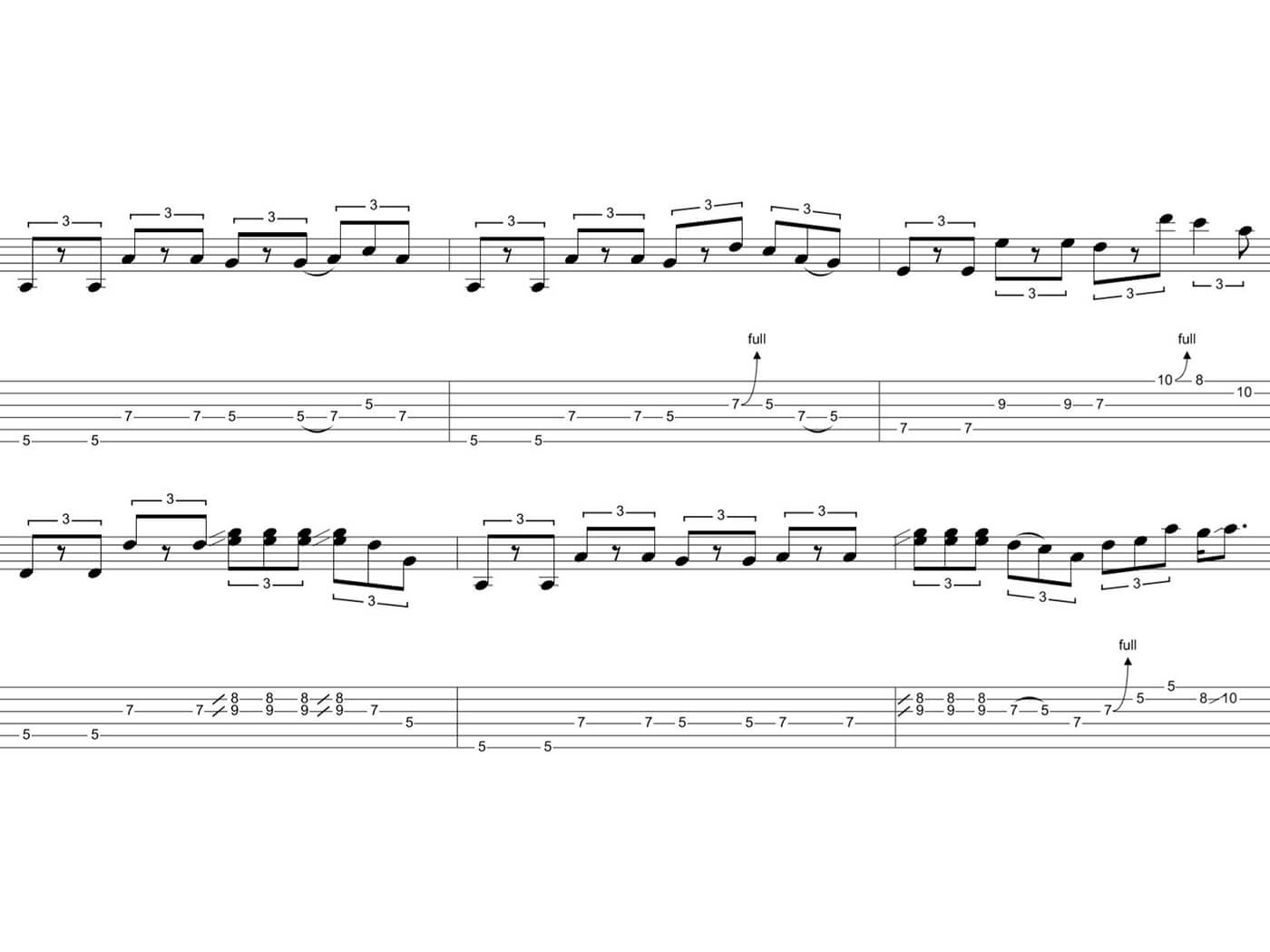Related Tags
Essential Blues Guitar Lessons Part 12: Combining rhythm with basic licks
The latest part of our essential guide to blues guitars sees us start to put it all together, as we combine rhythm with the basic lead lines we’ve learned so far.

Doublestops, triplet licks and full-tone bends were all common part of Stevie Ray Vaughan’s blues guitar vocabulary. Image: Getty
A few instalments back in lesson six, we discussed the idea of combining rhythm with some simple lead passages to get the fingers on our left hand moving.
In this instalment, we’re going to take some of the ideas we discussed in lesson 11 about forming basic licks and combine those with some rhythmic elements. When you compare this with what you were doing back in lesson six, you’ll see how much closer you are to forming a great blues piece.
In this lesson, we will look at two 12-bar patterns, which both have a shuffle feel but contain a different way of playing the rhythmic element. Both examples are in the key of A Minor and utilize lead passages made from notes in the A Minor Pentatonic scale in the pentatonic first shape and second shape. We will also be using the legato techniques we learnt in lesson seven, and string bending we learnt in lesson 10.
Example 1

This first example will be played with the rhythmic element based around an open power chord shape that we saw in the first example of lesson two (issue 366). The triplet feel will be present throughout this whole 12 bar cycle.
(1 2 3, 2 2 3, 3 2 3, 4 2 3)
In the first six bars, the lick will happen at the end of every other bar. The first is a triplet on the third beat starting with a ful-tone bend on the 7th fret of the G before going up over the 5th fret on the B and E strings. The short run ends with a full-tone bend on the 8th fret of the B, which is a quarter-note.
The second lick is a longer, descending part. It is made up of a triplet on the third and fourth beats. The first triplet is the 5th fret on the E string followed by a pull off from the 8th fret to the 5th on the B. The second triplet is a quick full tone bend on the 7th fret of the G followed by the 5th fret of the G and the 7th fret of the D.
The third lick is a doublestop played with a triplet rhythm. The doublestop is made up of the 9th fret of the G and the 8th fret of the B strings. You’ll slide into the first beat of each triplet, giving you a slide guitar feel.
Bars 7 through 12 in this example do stray from the “lick at the end of every other bar” format we followed in the first half. The first bar in this half is the rhythm, and there is a one on the second bar. We also have them on the third, fourth and sixth bars of this example. In a 12-bar form that will be bars 8, 9, 10 and 12.
The first lead line that appears in bar 8 comprises two sets of triplets. The first triplet starts with a slide to the 7th fret of the D before playing the 5th on the G and back to the 7th on the D. The second triplet starts with the 5th on the G, goes back to the 7th on the D and then ends on the 7th of the G. To achieve this, you’ll want to roll the finger used to play the D string down.

The second is a simple full-tone bend on the 7th fret of the G followed by the 7th fret played normal and the 5th fret. This retains the triplet feel of the rhythm part.
The third one is similar to the first, except it does not roll down to the 7th on the G. The 5th fret of the G that opens the second triplet of the lick is held for the duration of two notes.
The final riff found in bar 12 of this cycle will be the most ambitious one that we have attempted this far in the series. It is all triplets; the first two are identical. A bend on the 7th fret of the G followed by the 5th fret on the B and E strings. The third triplet is the 8th and 5th frets of the B string followed by another full tone bend on the 7th of the G and the final triplet is a pull-off from the 7th to the 5th fret on the G and the 7th fret on the D to end.
Example 2

This example will be played with the rhythmic element based around a fretted octave shape as seen in example two of lesson two. The triplet feel will be present throughout this whole 12-bar cycle.
The format of the first six bars is the same with the lick appearing at the end of bars 2, 4 and 6. The first is a simple full-tone bend of the 7th fret on the G, which falls on the first note of the triplet starting on the fourth beat, this is held for the duration of two notes before finishing on the 5th fret of the G.
The second riff uses the last note of the third beat triplet as it’s starting point. Once you have picked the final note of the third beat triplet, which is the 5th fret of the D string, you will then to a hammer on to the 7th fret and pull off back to the 5th fret before finishing on the 7th fret of the A string. The third lead line is a slide from the 7th to the 9th fret of the G before finishing on the 8th fret of the B string.

As with the first example, the final six bars stray from format established in the first six. These bars have a lick on every bar except for bar 11 of the overall cycle. The first riff once again starts on the end of the third beat triplet as a hammer-on from the 5th to 7th fret of the D string. This is followed by the 5th fret on the G and 7th fret on the D.
The second starts on the end of the third beat triplet but with a different note. You will be doing a full tone bend on the 7th fret of the D string before hitting the final triplet descending run from the 5th fret of the G and through a pull off from the 7th to 5th fret on the D.
The third lick takes you up into the second shape of the scale. Which starts with a full tone bend on the end of the third beat triplet from the 10th fret of the E string. The final triplet is made up of the 8th fret of the E string held for the duration of two notes and the 10th fret of the B.
The fourth line covers a triplet on beats three and four and starts with the same doublestop sliding motif we used earlier for the first triplet but the second triplet contains the slid doublestop on the first note then the 7th fret of the G and 5th fret of the D to finish.
The final riff of this cycle is another big one. The first triplet is the recurring slid double stop. The second triplet is a pull-off from the 7th to the 5th fret of the G and the 7th on the D. The third triplet is an ascending run starting with a full tone bend on the 7th fret of the G before going to the 5th on the B and E strings. The final note is not a triplet, it’s a slide from the 8th to the 10th fret of the B string.
Try it yourself
There are no set rules about where in a 12-bar cycle you should or could put your licks. Use your own initiative and place them in segments of the rhythmic pattern where it feels natural to do so. Use your ear and experiment by moving them around.
On interesting concept to consider is flipping the format around and starting a bar with a lick before going back into the rhythm at the tail end of the bar. Blues is a very experimental genre and this lesson will get you on the way to playing some fully formed blues passages!
About the Author
Leigh Fuge is a guitar teacher and professional musician from Swansea in the UK. He has taught hundreds of students face to face and via the MGR Music platform. He has over 10 years’ experience working in the industry as a touring musician, session guitarist and teacher. To find a qualified guitar teacher in your local area, visit mgrmusic.com.
